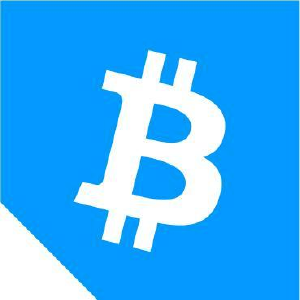The ongoing debate comparing SWIFT to XRP often leans into hype, but Vincent Van Code recently offered a sober, technical perspective on X. His explanation broke down how SWIFT truly operates and why Ripple’s model, powered by XRP, could eventually augment — or in some cases replace — traditional correspondent banking. By drawing on real-world payment flows, Vincent Van Code provided a grounded view that highlights both the inefficiencies of SWIFT and the promise of Ripple’s solution. How SWIFT Works — Messaging, Not Money Movement SWIFT is not a payment rail. It is a secure messaging system used by more than 11,000 financial institutions worldwide to transmit payment instructions. Actual settlement depends on chains of correspondent banks holding balances with each other in nostro and vostro accounts. With all the noise lately around SWIFT vs XRP (which is such a dumb comparison), I will weigh in on what SWIFT really is, and I will comment on how Ripple will (eventually replace or augment it). And yes nothing Bout XRP, mooning or switch flipping…. But if you are after some… — Vincent Van Code (@vincent_vancode) September 5, 2025 Each transfer involves debits and credits across intermediaries, compliance checks, FX conversions, and batch processing. Even with improvements like SWIFT GPI, which has accelerated certain flows, many cross-border payments still take two to three days to complete. A Corridor Example: Yen to Australian Dollars To illustrate, Vincent Van Code described a yen-to-AUD remittance. A Japanese bank initiates a payment routed through its U.S. dollar account at Citibank. The Australian bank involved maintains its own dollar account at Bank of America. Instructions are relayed via SWIFT, but each leg involves processing times and cut-offs. The funds may take 48 to 72 hours to settle fully, exposing both banks and customers to delays, foreign exchange risks, and higher costs. How Ripple Streamlines Settlement Ripple’s On-Demand Liquidity (ODL) reimagines this process. Instead of pre-funding accounts abroad, the sending institution converts local currency into XRP through an exchange. XRP moves across the ledger in three to five seconds , and the receiving institution instantly converts it into the target currency for local settlement. The process eliminates multiple intermediaries, reduces the need for dormant capital in nostro accounts, and achieves near-instant finality. Where compliant on/off ramps exist, this offers significant cost savings and transparency. Adoption Challenges Remain Despite its advantages, Ripple’s solution faces hurdles before it can challenge SWIFT at scale. Liquidity depth is uneven across certain currency pairs, and regulatory requirements around AML, KYC, and settlement oversight remain stringent. Additionally, many banks are conservative when replacing long-standing correspondent relationships. Ripple has achieved operational success in specific corridors; however, widespread adoption is a gradual and often pilot-based process. We are on X, follow us to connect with us :- @TimesTabloid1 — TimesTabloid (@TimesTabloid1) June 15, 2025 Augmentation Over Replacement Vincent Van Code’s analysis underscores that Ripple is unlikely to displace SWIFT instantly. Instead, it is more realistic that Ripple will augment global payments by solving inefficiencies in corridors where liquidity and compliance frameworks are favorable. Over time, if proven cost savings and regulatory alignment continue to build confidence, XRP-powered solutions could play a central role in modernizing international money movement. Looking Ahead: Tokenization and CBDCs The conversation also extends beyond remittances. Ripple has positioned itself at the intersection of tokenized assets and central bank digital currencies (CBDCs), both of which are gaining traction globally. As institutions explore the tokenization of securities, real estate, and other assets, the need for fast, liquid settlement rails becomes even more pressing. Similarly, several central banks are experimenting with CBDCs, and Ripple has already engaged in pilots with some of them. In both cases, XRP’s ability to serve as a neutral bridge asset could enhance interoperability between fragmented systems — an area where SWIFT has struggled. A Long-Term Transformation The comparison between SWIFT and XRP is not about “flipping a switch” or overnight replacement. As Vincent Van Code noted, transforming international finance is as complex as building reusable rockets or advancing artificial intelligence. Ripple’s technology has the potential to reshape global payments, but the process will be measured in years, not weeks — a long game defined by persistence, compliance, and real-world performance. Disclaimer : This content is meant to inform and should not be considered financial advice. The views expressed in this article may include the author’s personal opinions and do not represent Times Tabloid’s opinion. Readers are urged to do in-depth research before making any investment decisions. Any action taken by the reader is strictly at their own risk. Times Tabloid is not responsible for any financial losses. Follow us on Twitter , Facebook , Telegram , and Google News The post SWIFT vs XRP: How Ripple Will Augment or Replace It appeared first on Times Tabloid .














